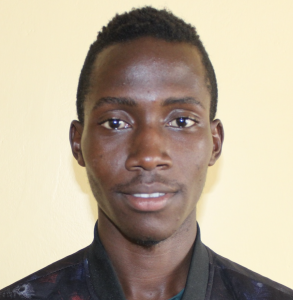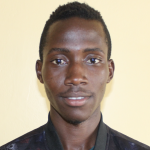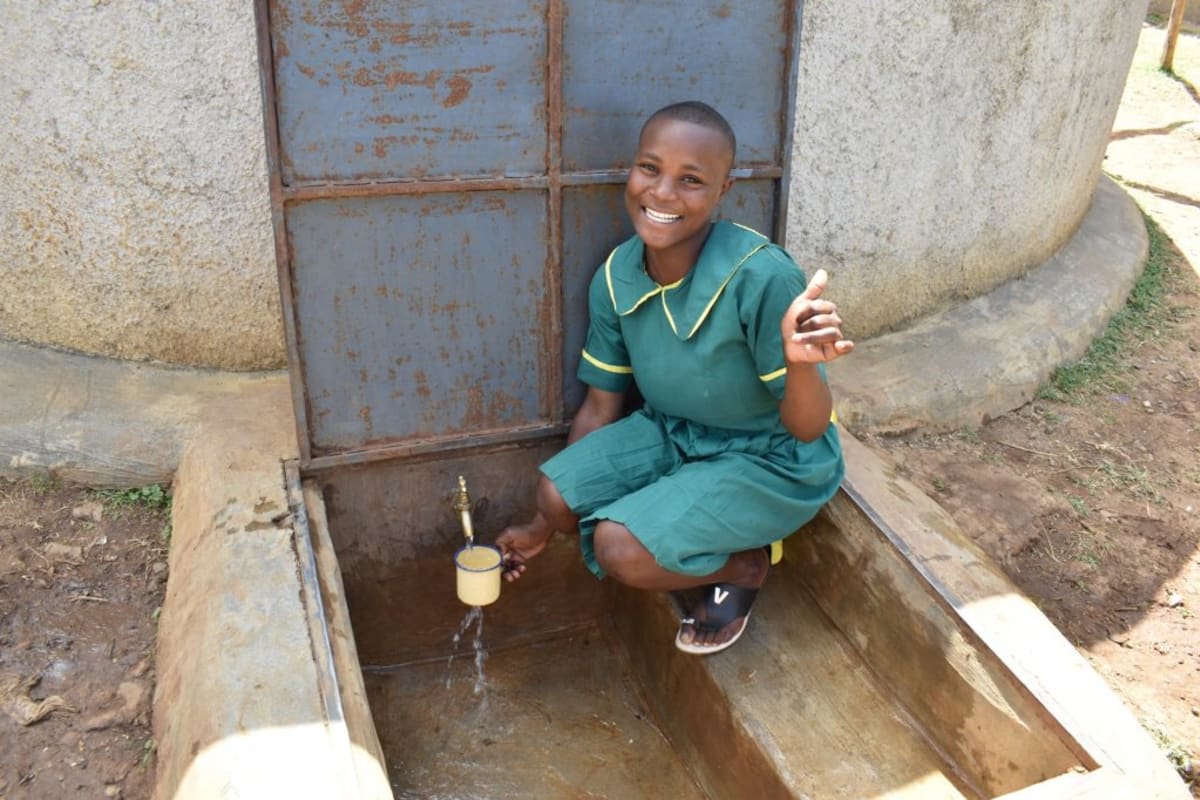Please note: original photos were taken before the COVID-19 pandemic.
This is the daily reality for the 365 students and 16 teachers and staff at St. Peters Bwanga Primary School, as reported by Teacher Mr. Nicholas Yasisi.
"Every day I get a case about a student who is in pain or is experiencing diarrhea as a result of consuming dirty water. It is most common in the Early Childhood Development class, and it has really worried the parents. We tried talking to the children to only drink boiled water, but some of them don't listen and sometimes there isn't enough of it."
There is not a single source of water at this school. Every day, students trek to 3 different yet dirty sources of water for all of the drinking, cooking, and cleaning needs. The main source is a muddy stream, the second an unprotected spring, and the third simply a make-shift collection point for run-off water from a hill after it rains. No source is safe for drinking.
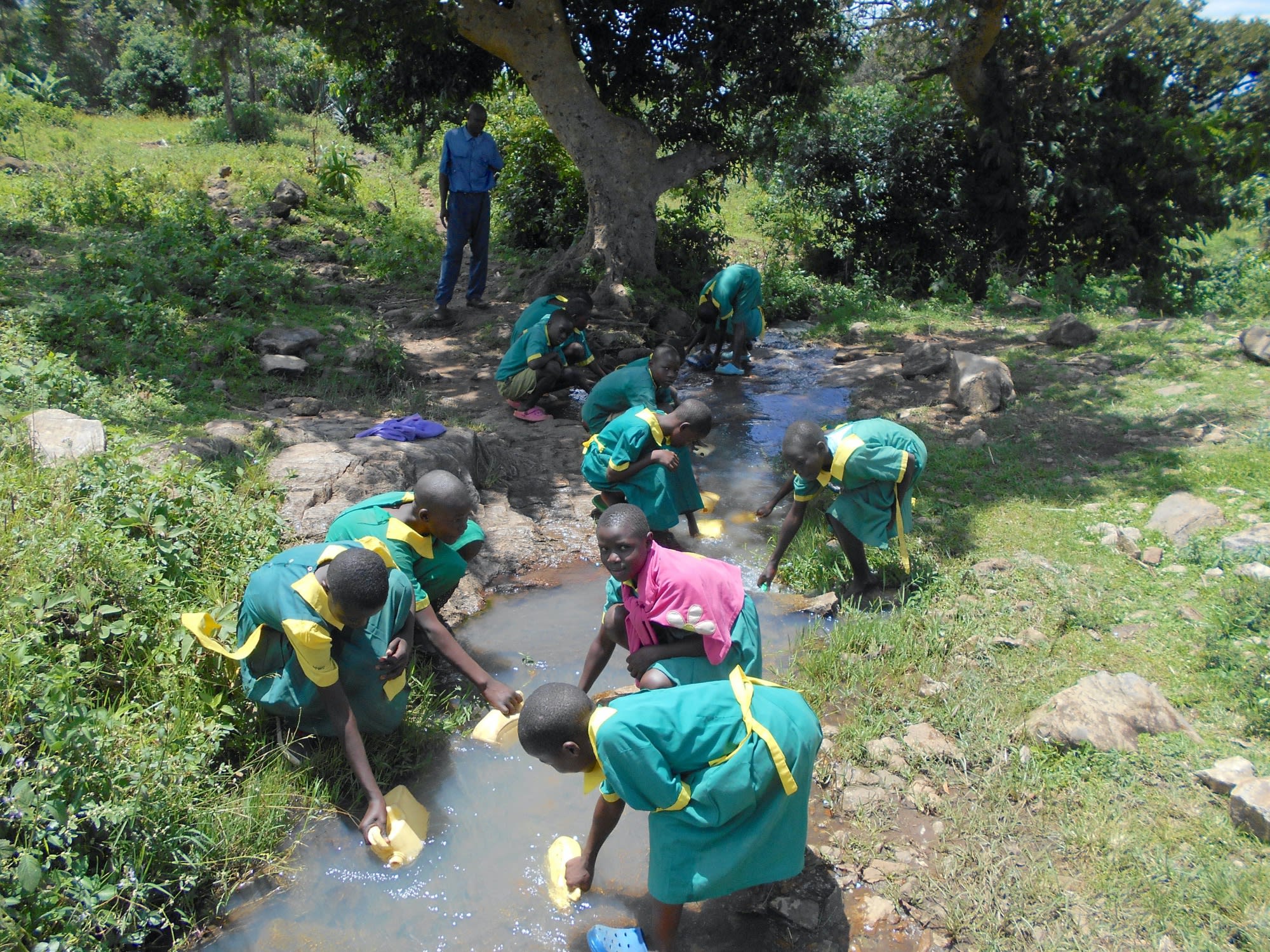
The main source, a stream from the nearby slopes, passes through the homes of several people. The water itself appears milky and has sand particles in it as it is quite shallow at the place where students can collect it. The unprotected spring carries similar characteristics as it is not clear and has large moss plants growing in it. The other surface water passes through multiple sugarcane plantations, carrying with it all of the chemicals, fertilizers, and pesticides from the crops.
This water is the result of water seepage from the ground at various points before it channels through the farms into the small stream and out of a makeshift banana leaf pipe, where the students collect it.
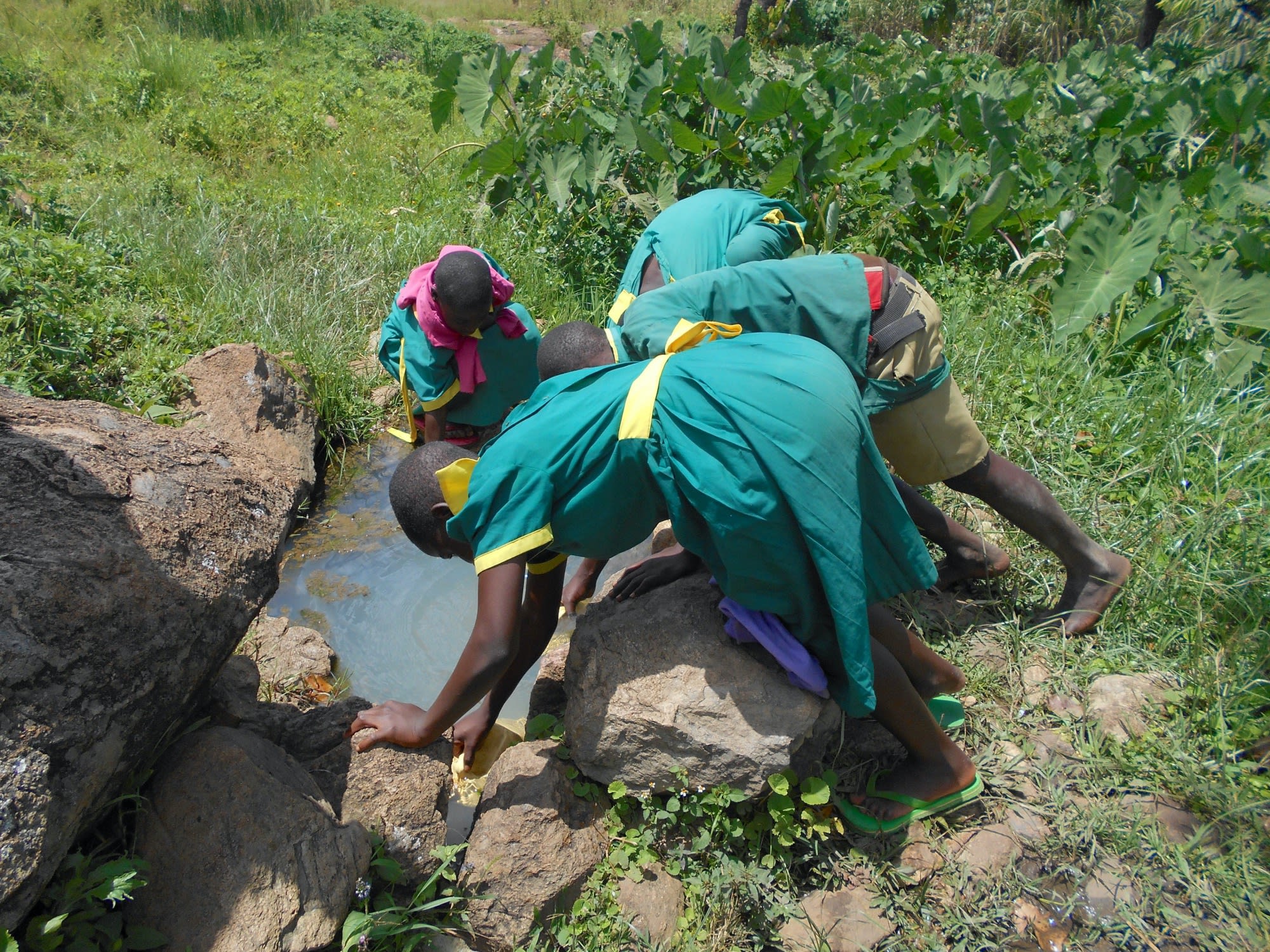
While the school kitchen staff tries to boil all of the water before students drink it, there is not always enough firewood or time to do so. And even when some water is boiled, it runs out before everyone can get a drink. Thus, the dirty water is consumed untreated anyway and leads to high rates of waterborne diseases among students.
"We always have to wait for the water to be boiled for us to take it. We are many [in number] and water that is boiled is not enough to quench all of us. Also, sometimes it is still too hot to drink," explained student Janet.
With students arriving at 7:00 am and not going home until 5:00 pm, the students are called upon and sent out of school to get water whenever there is a need. Typically, that means several times a day. Each walk to fetch water is tiring and time-consuming, and students arrive back in school already too tired to focus. Their performance is hurting when they miss significant portions of their lessons, and the situation is intensified when they are kept out of school by their water-related illnesses.
What We Can Do:
Rain Tank
A 75,000-liter rainwater catchment tank will help alleviate the water crisis at this school. The school will help collect the needed construction materials such as sand, bricks, rocks, and water for mixing cement. We will complement their materials by providing an expert team of artisans, tools, hardware, and the guttering system. Once finished, this tank will begin catching rainfall that will be used by the school’s students and staff for drinking, handwashing, cooking, cleaning, and much more.
We and the school strongly believe that all of these components will work together to improve standards at this school, which will help lead to better student academic performance and will help to unlock the potential for these students to live better, healthier lives.
Handwashing Stations
There is currently nowhere for students to wash their hands after using the latrines or before eating lunch, let alone the water to do so.
The student health club will oversee the 2 new handwashing stations we will provide, and make sure they are kept clean and in working condition. The club leaders will fill the handwashing stations with water daily and make sure they are always supplied with a cleaning agent such as soap or ash.
VIP Latrines
2 triple-door latrine blocks will be constructed with local materials that the school will help gather. 3 doors will serve the girls while the other 3 will serve the boys. All of these new latrines will have cement floors that are designed to be easy to use and to clean. And with a rain tank right on school property, there should be enough water to keep them clean.
Training on Health, Hygiene, COVID-19, and More
All primary and secondary schools are currently closed in Kenya due to the COVID-19 pandemic, but they are scheduled to reopen in January 2021. Once classes resume, we will schedule a training session with students, teachers, and parents. This intensive training will cover a wide range of topics including COVID-19 symptoms, transmission routes, and prevention; personal and environmental hygiene; and the operation and maintenance of the rain tank, latrines, and handwashing stations. There will be a special emphasis on handwashing.
Our team of facilitators will use a variety of methods to train, including participatory hygiene and sanitation transformation, and asset-based community development. We will initiate a student health club, which will prepare students to lead other pupils into healthy habits at school and at home. We will also lead lectures, group discussions, and provide illustrative handouts to teach health topics and ways to promote good hygiene practices within the school including handwashing and water treatment. We will then conduct a series of follow-up trainings before transitioning to our regularly scheduled support visits throughout the year.

 Rainwater Catchment
Rainwater Catchment
 Rehabilitation Project
Rehabilitation Project












